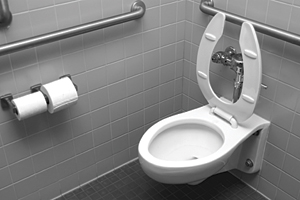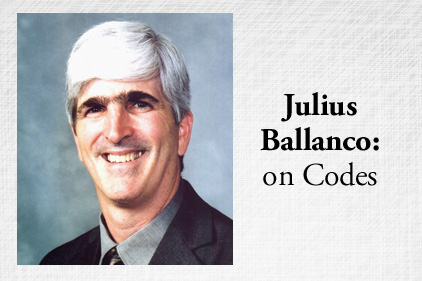
|
| Another series of proposed UPC changes would lower the flow rates and water usage for various fixtures. Photo credit: ©istockphoto.com/Jeremy Swinborne |
If various proposed changes are accepted, the 2015 edition of the Uniform Plumbing Code could have a new look.
The two-year cycle leading up to the next edition of the UPC will start with a meeting in Salt Lake City the last week of this month and the first week of May. There are 369 proposed changes to the plumbing code. However, many of those changes relate to standards.
Since the first edition of the Uniform Plumbing Code, it was considered persona non grata to add a standard to the body of the code. Standards were only referenced in one section, namely the list of standards which in recent years became Chapter 14. Over the past two cycles, some standards have started drifting into the code, resulting in the chairman of the Plumbing Technical Committee forming a task group to look at standards.
When the task group recommended adding the standards to the body of the code, the floodgates opened. Many changes have been proposed by various organizations to add the standards to the body of the code. The full name and date of the standards will remain in Chapter 14, but the standards would appear where appropriate in the code.
This will greatly assist the plumbing engineering community since it will be easier to identify which standard applies where. Currently, it is a guessing game as to how to apply the standards.
Not everyone submitting code changes received word of the proposed policy change. There are still a number of changes that simply add new standards to Chapter 14 with a general reference in the body of the code to the “standards in Chapter 14.” Those proposed changes will be easy to correct with a slight modification.
ASPE’s Legislative Committee was very active with proposing changes. ASPE has more than 50 proposed changes. One of the more important changes is to correct the wet venting requirements. Over the past few cycles, the wet venting requirements have become convoluted as a result of a lack of understanding of the venting system. Adding new venting requirements often results in unnecessary tinkering, which leads to incorrect requirements.
ASPE also proposed adding air-admittance valves to the venting chapter. The proposed change is consistent with what ASPE publishes in its Plumbing Engineering Design Handbook. It should be an easy change to accept, but look out for fireworks.
Lowering the flow
Another series of proposed changes would lower the flow rates and water usage for various fixtures. Water closet flush volume is proposed to be lowered to 1.28 gpf. A similar change would require 1.28 gpf or a dual-flush with 1.6 gpf for solids and 1.1 gpf for liquids. The proposal for urinals would lower the flush volume to 0.5 gpf.
Public lavatories are proposed to have a flow rate of 0.5 gpm or a metered use with a maximum of 0.25 gal. of water. Pre-rinse sprays would have the flow rate lowered to 1.3 gpm.
A few water closet proposals have an exception proposed that would allow a 1.6-gpf water closet if there was a single water closet located not less than 30 ft. upstream from a horizontal branch. This exception originally was derived by a green organization as a compromise position. However, the proposal is not based on any technical justification. This is one of those guesses that sometimes find its way into the code. The IAPMO Plumbing Technical Committee is smart enough to realize such a requirement should never be added to the code. Either you accept 1.28-gpf water closets or you don’t.
It should be an interesting discussion on flush volumes because IAPMO is headquartered in California where the state already has lowered the flush volume requirements for water closets.
And some more proposals
There are three proposed changes to the sizing of water piping systems. The three changes are not similar to one another. One change proposes to redo the Hunter’s fixture unit sizing method. The method adds calculations using the single-fixture demand flow rate, the number of each kind of fixture and the probability of single fixture use.
A surprising change to the drainage section would place a limitation on the use of plastic pipe. ABS and PVC would be limited to buildings two stories or less in height. It seems like this code change got stuck in a time warp. IAPMO removed the restriction on plastic pipe more than 20 years ago.
The sizing of the drainage and vent system that currently appears in the appendix as an engineered design is proposed to be added to the body of the code. This is a good change that would make the DWV sizing consistent with other codes and engineering documents.
Other DWV sizing changes would allow a shower to have a 1 1/2-in. trap. A kitchen sink drain could also be 1 1/2 in. Currently, a kitchen sink can have a 1 1/2-in. trap. However, a 2-in.drain is required.
The IAPMO Code Review Task Group proposed moving the vacuum drainage system and the circuit venting requirements from the appendix to the body of the code. Both are much-needed changes.
ASPE proposed a change to rewrite the storm drainage sizing method. The proposed code change is consistent with the Engineering Research Report issued by the ASPE Research Foundation. The only addition to the foundation’s recommendation is the allowance for a quick sizing method, also called the cookbook method. The cookbook method would slightly oversize some storm drainage systems but avoid having to go through the calculated sizing method.
In the medical gas section, new sizing tables are proposed. The tables are consistent with ASPE’s sizing methods.
The IAPMO monograph of plumbing and mechanical changes can be downloaded at www.iapmo.org. I recommend downloading a copy and reviewing all proposed code changes.



